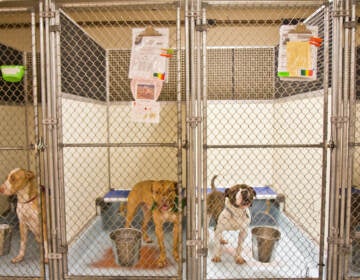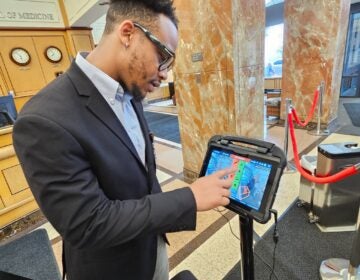Homeward bound: When a Penn Medicine nurse was diagnosed with uterine cancer, she turned to the service dogs she helped to train
Maria Wright recently found herself in an unlikely position when she received a devastating cancer diagnosis — becoming one of the people she usually serves.
Listen 1:40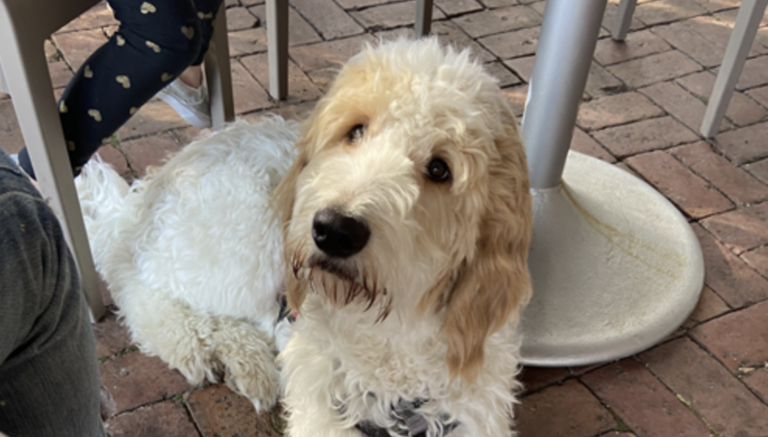
Cappuccino, or “Cappy," is among the service dogs Maria Wright has helped train. (Courtesy of Penn Medicine)
From Philly and the Pa. suburbs to South Jersey and Delaware, what would you like WHYY News to cover? Let us know!
Maria Wright has spent her life caring for other people — as a mother, a nurse, and, for the past eight years, a volunteer with United Disabilities Services’ training program for service dogs.
“I was hooked,” she said from her first encounter with the Lancaster nonprofit’s service dogs. “It was something that I was very impressed with — with the volunteers and what the dogs learned and watching them from eight weeks to two years, and it was like, ‘Wow, this is a working animal now.’”
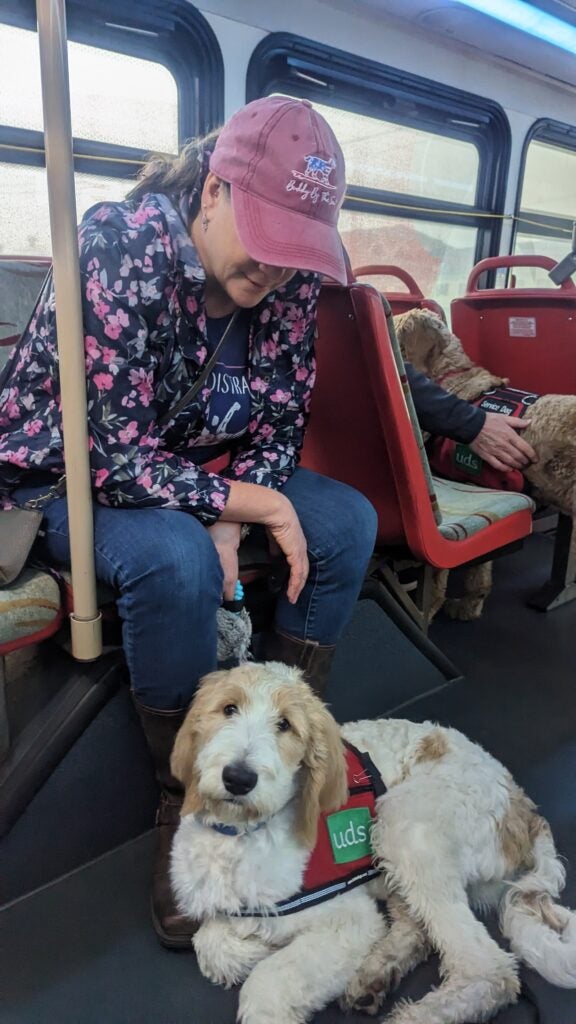
Not long after, Wright signed up for one of the program’s more rigorous volunteer positions: puppy raiser. Several months ago, she applied for and received a Penn Medicine CAREs grant to help support the work.
But in 2022, Wright found herself in the unlikely position of becoming one of the people she usually serves when she received a devastating diagnosis: high-grade uterine leiomyosarcoma, or cancer of the uterus.
At the time, Wright was on the verge of accomplishing a long-held dream — completing her bachelor of science degree in nursing so she could become a bedside nurse after more than 20 years as a licensed practical nurse, and a nurse’s aide before that.
“It turned my life upside down, more or less,” she said. “I had to take a semester off to go through surgery.”
Wright did eventually finish her BSN, and became a bedside nurse at Penn Medicine Lancaster General Health. But about a year ago, Wright was forced to quit when her doctors discovered that the cancer had metastasized to her lungs.
At that point, the illness — and the treatments, which had compromised her immunity — made it too difficult and dangerous for Wright to continue, so she transitioned into a new role as a rehab case manager at Penn Medicine Lancaster General Health’s Neuroscience Institute.
Volunteering as a ‘puppy mom’
Through it all, though, Wright stuck with her volunteer work as a puppy mom, which involves caring for, socializing and training puppies for the first few months of their lives, both at home and in weekly training classes.
After that, the puppies are shipped off to Pups for Prisons, a program started in 2014, in which incarcerated people at federal prisons spend eight months performing focused obedience training.
“It’s the best foundation our dogs will get for obedience training,” said Lori Breece, senior manager of Client Support Services at United Disability Services, and manager of the service dog training program. “It’s the only time that 24-7 really means 24-7.”
It’s also an opportunity to weed out dogs that don’t have the right temperament for service work.
“Dogs that are either too high-energy, too low-energy, or the ones that may have barking challenges or any fear,” Breece said.
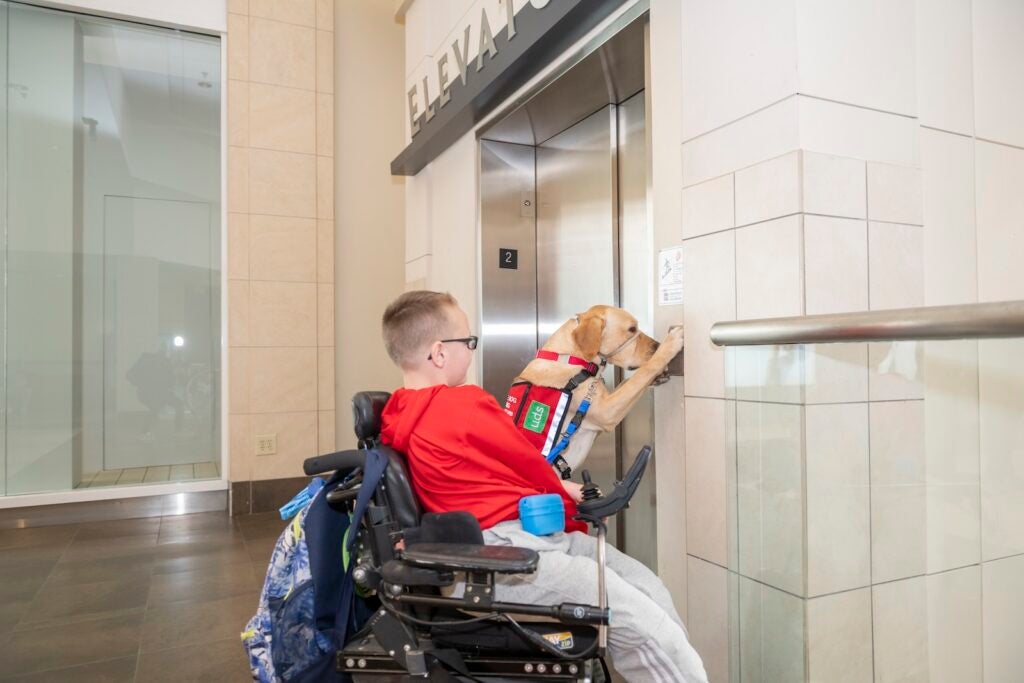
After those eight months, the dogs are returned to volunteer homes for another six months, where they continue training classes and are exposed to as many different situations as possible.
“So that’s going to restaurants and retail stores, and church and vacations, and airplanes and trains and buses, and every possible scenario that we can imagine,” Breece said. “Because we don’t know during that training time where they’re going to end up.”
The final step, once the dogs have reached 18 months of age, is to enter United Disabilities Services’ kennel, where they receive a final six months of one-on-one training tailored to the needs of their eventual owner. And those needs can run the gamut — people with vision impairments who need seeing-eye dogs, to those with mobility needs due to conditions like multiple sclerosis or muscular dystrophy, to PTSD, autism and more.
For volunteers like Wright, it can be a demanding gig, but one that has its perks.
“Snuggling,” Wright laughed, when asked about her favorite part of the work. “I would say it definitely gives me a sense of purpose and it is really truly therapeutic to me. It helps with distraction, it helps with purpose.”
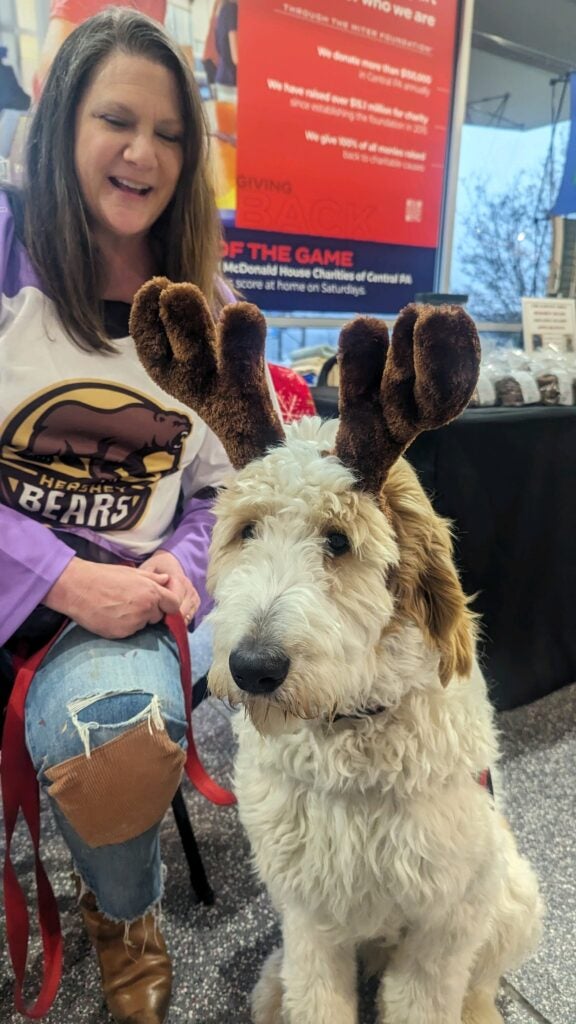
Applying for her own dog
Over the past year, Wright’s illness has affected every part of her life, despite the support she’s received from family and friends.
“I am definitely much more socially isolated than I ever was,” she said. “My immunity is at times not there, where I’ve been very close to hospitalization and isolation.”
Her illness and compromised immunity make even going to the store a daunting and sometimes difficult task, as she struggles to avoid exposure to germs.
And so, about a year ago, Wright had an idea. Why not apply for her own service dog?
“I finally thought, what do I have to lose?” she said.
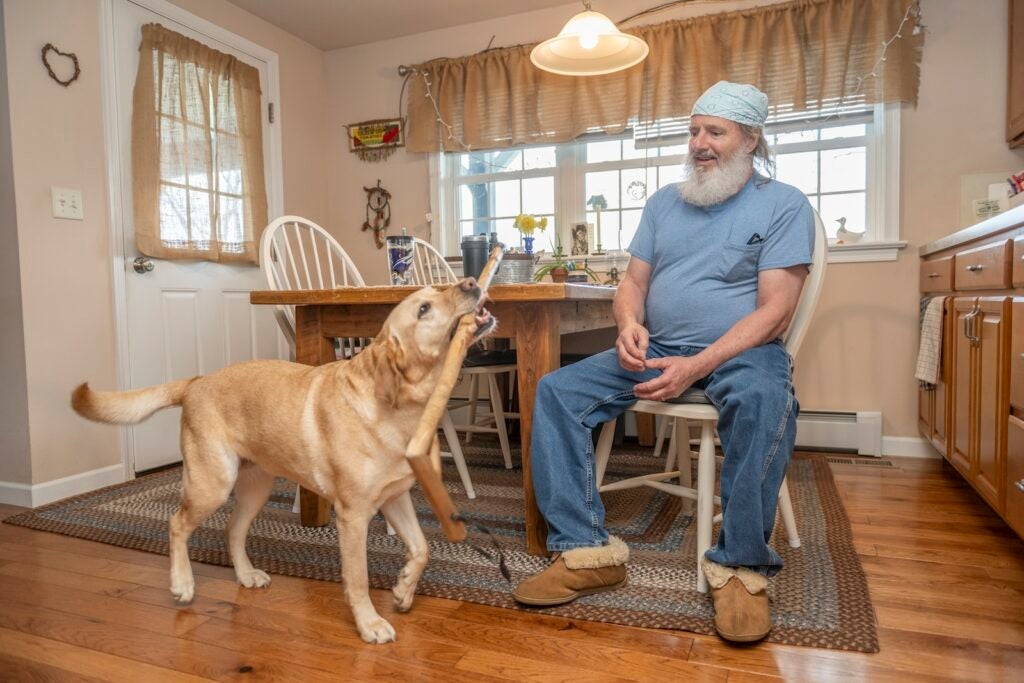
After a months-long application process that included paperwork, letters of recommendation and doctors’ notes, Wright got the news: she was on the list. That doesn’t mean she’ll be getting her own service dog in the near future, though.
“The average wait time right now is two years,” Lori Breece said, adding that it can stretch to as long as four years for those who require service dogs to help them walk.
One of the limiting factors, Breece says, is volunteer puppy homes.
“Raising a puppy is like having a child,” Breece said. “You’re getting up every two to three hours to take them out to the bathroom, you’re going to put up with nights of crying all night. I mean, you literally have this little puppy that’s depending on you. So not everybody is prepared for that type of commitment, even though it’s two months.”
Breece said they recently had to turn down two puppies because they didn’t have enough volunteers.
But Wright is hoping she can expect her own service dog within a year or so.
“I’m actually starting my fifth line of treatment next week,” she said. “We’ve been running into some roadblocks with the other ones, so I’m hoping when I get a service dog I’ll be able to go to stores without feeling worried about touching things, or dealing with the cashiers.”
As for whether or not she’ll get one of the dogs she helped train?
“I think so, but I don’t want to speak out of turn,” Wright said. “I totally trust the staff and I know that they have my best interest at heart.”

Saturdays just got more interesting.
WHYY is your source for fact-based, in-depth journalism and information. As a nonprofit organization, we rely on financial support from readers like you. Please give today.



